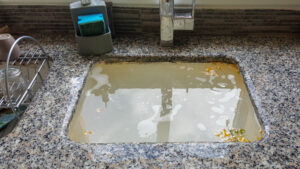
Sewage backup is a homeowner’s nightmare, causing inconvenience, health hazards, and costly damage to property. Recognizing the early signs of sewage backup and implementing preventive measures are crucial steps in safeguarding your home and maintaining a healthy living environment. In this guide, we explore the telltale signs of sewage backup and practical strategies to prevent this unpleasant occurrence.
Understanding Sewage Backup
Sewage backup occurs when wastewater from toilets, sinks, and drains flows back into the home instead of being safely transported to the municipal sewer system or septic tank. This can result from various factors, including blockages in the sewer line, overloaded municipal sewer systems, or malfunctioning septic tanks. Regardless of the cause, sewage backup poses serious health risks and requires prompt intervention to mitigate its effects.
Signs of Sewage Backup
- Foul Odors: One of the earliest indicators of sewage backup is the presence of foul, sewer-like odors emanating from drains or plumbing fixtures. These odors may indicate the accumulation of sewage gases in the plumbing system, signaling a potential backup.
- Slow Drainage: Noticeably slow drainage in sinks, showers, or toilets is often a sign of impending sewage backup. As wastewater struggles to flow freely through clogged or obstructed pipes, it can lead to backups and overflows in the affected fixtures.
- Gurgling Sounds: Unusual gurgling or bubbling noises coming from drains, toilets, or plumbing fixtures suggest air trapped in the pipes, a common occurrence preceding sewage backup. These sounds occur as air attempts to escape through the water in the pipes, indicating potential blockages or obstructions.
- Multiple Drain Clogs: Simultaneous clogs or backups in multiple drains throughout the home are indicative of a more significant plumbing issue, such as a blockage in the main sewer line. If left unaddressed, these clogs can escalate into full-blown sewage backups.
- Sewage Backup: The most obvious sign of sewage backup is the sudden appearance of wastewater or sewage in drains, toilets, or basement fixtures. Backflows of sewage pose immediate health risks and necessitate immediate action to prevent further contamination and damage.
Preventive Measures
- Routine Maintenance: Schedule regular inspections and maintenance for your plumbing system, including sewer lines, to detect and address potential issues before they escalate into backups. Professional maintenance can help identify blockages, leaks, or deteriorating pipes early on, preventing sewage backup.
- Proper Disposal Practices: Avoid flushing non-biodegradable items, grease, oils, and other debris down drains or toilets, as these can contribute to blockages and sewage backups. Dispose of household waste responsibly and educate household members about proper disposal practices to minimize the risk of backups.
- Tree Root Management: Tree roots seeking moisture and nutrients can infiltrate sewer lines, causing blockages and damage. Invest in proactive measures such as root barriers or regular root pruning to prevent root intrusion into sewer pipes and minimize the risk of backups.
- Sump Pump Maintenance: If your home is equipped with a sump pump, ensure that it is regularly inspected and maintained to prevent basement flooding and sewage backups during heavy rainfall or flooding events.
- Backup Prevention Devices: Consider installing backwater valves or check valves in your plumbing system to prevent sewage from flowing back into your home during sewer line backups or flooding. These devices act as barriers, allowing wastewater to flow out while preventing backflows into your home.
Summary
Sewage backup poses significant health risks and property damage, making early detection and prevention crucial for homeowners. By recognizing the signs of sewage backup and implementing preventive measures such as routine maintenance, proper disposal practices, and the installation of backup prevention devices, you can safeguard your home against this disruptive occurrence. Remember, prompt action is key to minimizing the impact of sewage backup and preserving the integrity of your plumbing system.

